Sciatica can be extremely painful and debilitating, causing sharp pain from your lower back down your leg. If you’re suffering from sciatica, microdosing cannabis with our low-dose edibles may bring you sweet relief.

Don’t worry; all of our products contain low doses of cannabis compounds. That’s one of the many benefits of microdosing: you take small amounts regularly and experience relaxation and relief without overwhelming your senses.
Order your Delta 9 gummies or indulge yourself in the best liquid THC drink for quicker effects.
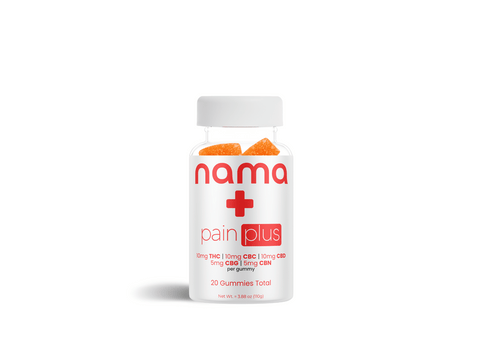

THC: 10 mg | CBC: 10 mg | CBD: 10 mg | CBG: 5 mg | CBN 5mg
If you're fed up with sciatica, keep reading to find out why low doses of cannabis are kryptonite for chronic pain.
What Is Sciatica and Why Is It So Painful?
Sciatica is a type of neuropathy (neuropathic pain) characterized by pain radiating from the lower back and traveling through the sciatic nerve. The pain is typically felt in the buttocks and back of the thigh and may radiate down to the foot.
The Sciatic Nerve
The sciatic nerve is the longest and thickest nerve in your body. It is about 2 centimeters, or nearly an inch, wide (picture a penny), and it consists of a bundle of nerves that branch off from your spinal cord.
Both sides of your body have one sciatic nerve that runs through your hips and buttocks. They go down the leg and reach just below your knee. At the knees, they split into other nerves that connect to parts further down, including your lower leg, feet, and toes.
When your sciatic nerve is inflamed, you experience mild to severe pain anywhere on the nerves that are connected to it. The pain can affect your lower back, hips, buttocks, and legs and can even extend as far down as your feet and toes.
What Are the Symptoms of Sciatica?
Symptoms of sciatica can range from very mild tingling to being completely debilitating. For most people suffering from sciatica, these symptoms can be very painful and may disrupt their daily lives.
However, since sciatica is not a dangerous or permanently damaging condition, the symptoms typically go away within 4–8 weeks with conservative treatment.
Typical symptoms of sciatica pain include:
- Sharp, burning, tingling, or throbbing pain in the buttocks and legs
- Constant pain that may be worse when sitting, coughing, sneezing or straining
- Shooting pain or difficulty bending the knee
- Numbness or muscle weakness in the affected leg
- Difficulty moving the leg or foot
What Causes Sciatica Nerve Pain?
Any condition that affects the sciatic nerve or any of the five spinal nerves that bundle to form the sciatic nerve can cause sciatica. Anything that results in inflammation, compression, or disruption of the sciatic nerve roots or surrounding structures has the potential to cause sciatica.
Here’s what can cause this chronic neuropathic pain in the sciatic nerve:
- Herniated disc or bulging disc in the lower spine. This is the most common cause of sciatica. It occurs when one of the rubbery discs between the vertebrae ruptures or protrudes outward, putting pressure on the adjacent nerve roots that form the sciatic nerve. The swollen disc presses against them, causing inflammation and irritation that result in sciatic pain radiating down the leg.
- Pinching of the sciatic nerve. Sciatica often occurs when a herniated disc in the spine or an overgrowth of bone (also called bone spurs) forms on the spinal bones. In rare cases, tumors on the spine can put pressure on the nerve. This leads to inflammation or swelling in the affected leg.
- Spinal stenosis. The narrowing of the spinal canal that houses the spinal cord and nerves—called spinal stenosis—is more common if you suffer from arthritis and disc degeneration. When the openings for the nerve roots become smaller, it can pinch the sciatic nerve.
- Piriformis syndrome. This falls under problems with other structures surrounding the sciatic nerve, such as the piriformis muscle. The piriformis muscle is located deep in the buttocks. When it goes into spasm, it causes the sciatic nerve to compress, leading to pain and discomfort. Injuries such as a fall, a blow to the spine, or a car crash can also damage structures around the sciatic nerve and cause sciatica. Piriformis syndrome complications can also cause leg swelling.
- Non-specific low back pain. The cause of sciatica can be hard to determine for some people. Sometimes, it is triggered by the so-called non-specific low back pain, which is thought to be caused by minor muscle strains or imbalances that pressure the sciatic nerve.
- Pregnancy. In some women, the enlarging uterus temporarily presses on the sciatic nerve, causing sharp pain down the leg.
Sciatica can happen for many reasons, making it hard to determine exact risk factors.
The following may predispose individuals to sciatica:
- Over 30 years old
- Age-related conditions like osteoarthritis
- Occupational activities that cause repetitive back strain
- Obesity
- Diabetes
- Sedentary lifestyle, including prolonged driving
- Smoking
- Spinal abnormalities present at birth
- Previous back injury
- Pregnancy
How Is Sciatica Treated?
The first line of treatment for sciatica involves conservative measures like resting to relieve pressure on the nerve, applying hot or cold packs, taking prescription medications for pain relief, and doing gentle stretches and exercises to improve mobility.
While these conventional approaches can provide relief, some patients find they only offer partial or temporary respite from sciatic nerve pain. Emerging research indicates that microdosing cannabis could provide a natural way to alleviate many types of chronic neuropathic pain, including the nerve-related symptoms of sciatica.
Our collection of organic, hemp-derived gummies makes all other edibles on the market yesterday’s news, especially when it comes to pain relief. Try our Bliss Delta 9 edibles with an equal concentration of CBD and THC for the most blissful evenings. Honeydew flavor elevates these bad boys to a whole new level of yum.
Check out more delicious Delta 9 gummies to treat pain.
What Are Cannabis Edibles?
Cannabis edibles are products you can eat or drink that have been infused with active compounds from cannabis plants, typically Delta-9-tetrahydrocannabinol (Delta 9 THC) and cannabidiol (CBD). By ingesting rather than smoking or vaping cannabis, the compounds go through the digestive system and deliver longer-lasting effects.
Delta 9 THC is known for the "high" it produces when consumed in sufficient amounts. It is often called the main psychoactive compound found in the cannabis plant. At higher doses, THC can induce more intense effects, like:
- Euphoria
- Increased anxiety
- Paranoia
- Sensory distortion
Small amounts of THC are perfectly safe and rarely cause dangerous physiological effects. When consumed at lower doses, THC has therapeutic and medicinal properties, which is why we’re such strong proponents of microdosing.
Unlike its potentially psychoactive cousin, CBD does not have psychoactive effects, which is why THC and CBD make such a great pair. Edibles infused with THC and CBD have been shown to reduce pain and inflammation through their actions on the body's endocannabinoid system.
The Role of the Endocannabinoid System in Reducing Pain
The endocannabinoid system (ECS) is a complex network of receptors and signals that controls a wide range of bodily functions, including:
- Sleep
- Emotions
- Mood and stress
- Inflammation
- Pain perception
The ECS consists of CB1 and CB2 cannabinoid receptors. CB1 receptors are located predominantly in the brain and nervous system, while CB2 receptors are found in the immune system.
Our body produces natural cannabinoids that interact with these receptors. Cannabinoids derived from cannabis plants—such as THC and CBD—are called phytocannabinoids, and they mimic the effects of our own endocannabinoids, regulating important bodily functions.
The interaction between THC and CB1 receptors causes:
- THC to reduce anxiety and stress
- Reduced hyperactivity and epileptic seizures
- Reduced inflammation
- Pain relief
THC increases dopamine, causing the euphoric “high.” This flood of dopamine not only produces a feeling of pleasure and relaxation, but it also plays a key role in pain relief.
Although dopamine has been known as a neurotransmitter to mediate reward and motivation, accumulating evidence has shown that dopamine systems in the brain are also involved in the central regulation of chronic pain. (Li, et. al.)
Among other things, dopamine regulates pain perception. By boosting dopamine, THC is able to tap into the brain's built-in ability to suppress pain signaling.
CBD has anti-anxiety properties—it causes deep relaxation and soothes the mind. CBD doesn’t seem to bind to CB1 and CB2 receptors directly but impacts the endocannabinoid system by antagonizing or regulating how CB1 and CB2 receptors operate when THC is present. When taken together, CBD acts as a safety instructor for THC and softens effects such as increased heart rate, sedation, and anxiety.
This is why pairing THC and CBD in an edible produces greater therapeutic effects. Read more about the synergy between cannabis compounds, also known as the entourage effect, and why it’s important to dose your cannabis products with both CBD and THC.
Full-Spectrum CBD for the Ultimate Pain-Relieving Entourage Effect
Many of our edibles are full-spectrum CBD products, meaning they contain combinations and different ratios of CBD and THC, which are perfect for experiencing the entourage effect. When taken together, THC and CBD boost each other’s medicinal effects.
The entourage effect also explains why full-spectrum CBD products have greater therapeutic properties in combination.
Meet the star of our full-spectrum CBD gang: Relax Plus gummies contain only 5 mg of THC and 25 mg of CBD in each delicious gummy. These watermelon treats will provide soothing relief to irritated nerves thanks to the anti-inflammatory prowess of cannabis.
Don’t worry: with five milligrams of Delta 9 THC, you won’t experience the intense high typically associated with smoking cannabis. Instead, you'll feel a gentle wave of relief as low-dose cannabis activates your body's innate pain-killing system.
But what does research say about using THC and CBD for sciatica?
Can Edibles Relieve Sciatica?
Cannabis edibles with THC, CBD, and other therapeutic cannabinoids may reduce pain and inflammation associated with sciatica.
As we already mentioned, sciatica is a type of neuropathic pain. A 2018 study review found that “medical cannabis may be as tolerable and effective as current neuropathic agents.” Many users reported that they prefer cannabis over prescription medication, as it can relieve pain without the other side effects that come with pharmaceuticals.
A different trial study discovered that topical cannabidiol and CBD oils “can achieve significant improvement in pain and other disturbing sensations in patients with peripheral neuropathy.” Either in isolation or in combination with THC, CBD is excellent at reducing inflammation and relieving pain.
There was a statistically significant reduction in intense pain, sharp pain, cold and itchy sensations in the CBD group when compared to the placebo group. No adverse events were reported in this study.
THC may alleviate pain from sciatica by disrupting signals between the pathways in the brain that process pain. THC seems to disrupt normal communication between two important areas: the anterior cingulate cortex (ACC), involved in emotional and cognitive function, and the sensorimotor cortex, involved in sensory processing.
…the ACC and DLPFC, 2 major cognitive-emotional modulation areas, and their connections to somatosensory areas, are functionally involved in the analgesic effect of THC in chronic pain. This effect may therefore be mediated through induction of functional disconnection between regulatory high-order affective regions and the sensorimotor cortex. (Weizman, et. al.)
According to the study, the more THC reduces connectivity between these two regions, the greater the pain relief. THC also decreased connectivity in the dorsolateral prefrontal cortex (DLPFC), another cognitive/emotional region. Less DLPFC connectivity predicted greater individual pain reduction.
In essence, THC can interfere with pain signaling pathways in the brain to achieve its analgesic effects against chronic pain such as sciatica.
Product QUIZ
Need help deciding what product is best for you? Take our quiz, just three questions until your perfect match!
Can Delta 8 Reduce Pain Caused by Sciatica?
There is emerging evidence that another cannabinoid, Delta 8 THC, may help provide relief for sciatica symptoms. Delta 8 is an analog of Delta 9 THC and may share some of its pain-relieving properties.
What’s great about Delta 8 is that it is less psychoactive than Delta 9, and even at slightly higher doses, it relieves pain while keeping you functional and clear-headed. Here’s a great article about the differences in effects between Delta 8 and Delta 9.
Small amounts of Delta 8 THC can:
- Enhance focus and creativity
- Produce mild euphoria
- Elevate mood
- Increase appetite
- Help you sleep
- Relieve pain and inflammation
Early research shows Delta 8 attaches to the CB1 receptors in the endocannabinoid system and reduces pain signal transmission. Delta 8 may also have anti-inflammatory effects, which could help treat an underlying cause of sciatica as inflammation around the sciatic nerve compresses and irritates it.
Great news for all sciatica sufferers: Delta 8 THC is another therapeutic compound that is perfect for microdosing. Our gummies infused with hemp-derived Delta 8 are living proof.
If you’re wondering which gummies are better for kicking nerve pain to the curb, Delta 8 or Delta 9, we invite you to try both and judge for yourself. Order our delicious Elevate edibles and say goodbye to sleepless nights from radiating nerve pain.
Is CBN Good at Treating Sciatica?
Everyone, meet yet another cannabis compound, the underrated cannabinol (CBN), that will relieve the inflammation irritating your sensitive sciatic nerve.
CBN is a minor cannabinoid that is formed from the degradation process of THC. Its potential benefits include appetite stimulation, reduced anxiety, improved sleep, and lowered pain and inflammation.
The best thing about it is that, even though it is a byproduct of THC, CBN does not have psychoactive properties. Read more about the benefits of taking small amounts of CBN every day.
CBN shows the most potential when it comes to chronic pain treatment. While there isn’t any conclusive evidence that CBN can treat sciatica, we believe its potent anxiolytic properties sure come in handy when your lower back pain kicks in.
A 2019 study suggested that combinations of CBD and CBN can reduce pain and discomfort when applied topically to the masseter muscles in the jaw.
Combinations of CBD/CBN induced a longer-lasting reduction of mechanical sensitization than either compound alone… CBD (5 mg/ml), CBN (1 mg/ml) and the combination of CBD/CBN (1:1 mg/ml) increased the mechanical threshold of masseter muscle mechanoreceptors.
Taken together, CBN and CBD led to even longer lasting pain relief compared to either one alone. (What did we tell you about the entourage effect?) More importantly, the two compounds did not cause any impairment in motor function or alter pain perception in other areas not treated topically.
Sure, they share similar therapeutic effects, but check out our detailed comparison of CBN and CBD.
To experience the benefits of both cannabinoids, try our CBN gummies. Restlessness and pain-related insomnia are no match for our sleep gummies with CBN and melatonin. Packed with broad-spectrum CBD and a knockout 5 mg of CBN, sweet pain relief is a done deal.
How Do I Choose the Right Edible for Sciatica?
Choosing the best gummies for sciatica pain really isn’t that hard. Just go for organic, lab-tested formulas with precise ratios of pain-killing and anti-inflammatory compounds. Choosing edibles that contain low amounts of THC, CBD, and other cannabinoids is always a good place to start.
Shop at nama and never worry about chronic pain caused by sciatica again.
- Our Energy THC-infused gummies provide powerful analgesic effects. With sustained release, 2.5 milligrams of THC deliver long-lasting relief from flare-ups and irritation. CBD is there to relax muscles and prevent painful spasms.
- You may go THC-less and choose our high-quality broad spectrum CBD products. But we’ve explained why combining THC with CBD is a good idea when it comes to, well, everything. So buy our full spectrum CBD gummies, like the most phenomenal Sleep Plus edibles, and experience the prowess of anti-sciatica THC and CBD.
- CBN can relax your nerves and help you sleep, so choosing any of our CBN sleep gummies counts as a good idea to relieve nerve pain.
- Don’t forget about the mighty Delta 8, Delta 9’s younger brother. Edibles with Delta 8 improve restorative sleep while reducing sciatic tension and soreness. Here’s to pain relief with comfort, minus the mental fog.
See? We told you it was easy.
Don’t expect instant relief with gummies. Edibles typically take between 30 minutes and 2 hours to kick in. This depends on your metabolism, the potency of the edible, and whether you’ve had something to eat beforehand. Eating cannabis on an empty stomach can speed up absorption.
Start with a small amount and wait at least 45 minutes. The effects of our low-dose gummies can last up to eight hours, so let them fully develop before deciding to take more.
Where Can I Buy the Best Cannabis Edibles?
If you’re looking to buy the best gummies for sciatica, you've come to the right place. We deliver high-quality products with third-party lab tests that ensure purity and potency. Our edibles are unmatched in quality, efficacy, and flavor. We use real fruit to infuse our gummies with—no bland or artificial flavors here. Just delicious, effective gummies made with care and science-backed ingredients.
Shop at nama and experience the benefits of microdosing cannabis for sweet pain relief.
Can Edibles Treat Other Types of Pain?
Cannabis edibles have proven their effectiveness in treating many different types of pain. A 2015 study found that cannabis might be an effective way to relieve chronic pain, including neuropathic pain, arthritis pain, and cancer pain.
Here’s how small amounts of THC (2–5 mg per serving) can relieve pain and inflammation without getting in the way of your daily activities:
- Microdosing cannabis helps alleviate all kinds of nerve pain arising from injury, compression, or dysfunction of the nerves.
- Cannabis edibles can alleviate pain caused by inflammation affecting joints, muscles, or organs, such as arthritis or colitis.
- Aches and pains affecting muscles, tendons, ligaments, and bones can be easily mitigated with small amounts of cannabis.
- Microdosing THC and CBD helps with fibromyalgia-related pain.
- Low doses of THC may alleviate migraines and headaches that sometimes come with nausea or light sensitivity.
- Cannabis may be a natural cancer fighter, so it may also alleviate many types of cancer-related pain.
- Irritable bowel syndrome (IBS) and other digestive issues can cause plenty of abdominal pain. Microdosing cannabis helps alleviate symptoms of IBS, including chronic pain.
Chronic pain can often lead to increased stress, anxiety, and depression related to coping with constant discomfort.
But don’t worry—low doses of THC and CBD in our edibles help improve your mental health. By addressing both the physical agony and mental health burden of chronic pain, microdosed cannabis edibles offer comprehensive relief, allowing you to regain control over your health and enjoy life again.
Frequently Asked Questions
The quickest way to alleviate sciatica largely depends on the severity of the pain and its underlying cause. Sciatica can result from various factors, including herniated discs, spinal stenosis, or piriformis syndrome. While there's no instant cure, several approaches can help manage and mitigate sciatic nerve pain.
If you're experiencing acute sciatica pain, rest and gentle movement are recommended. Bed rest should be limited, as prolonged inactivity can worsen muscle stiffness and increase discomfort. Applying ice packs to the affected area for 20 minutes several times a day can help reduce inflammation and numb the pain temporarily.
Over-the-counter pain relievers like ibuprofen or acetaminophen can provide short-term relief by reducing pain and inflammation. However, relying solely on pain-killers isn't a long-term solution and may have side effects if used excessively.
Stretching and gentle exercises can help alleviate sciatic pain by improving flexibility and reducing muscle tension. Gentle yoga poses, such as the cat-cow stretch, child's pose, and supine hamstring stretch, can provide relief by stretching the lower back and hamstrings.
Microdosing cannabis can also bring relief quickly and effectively, thanks to the lower doses interacting with the endocannabinoid system just enough to reduce pain and inflammation without causing significant psychoactivity.
Acute episodes of sciatica can last anywhere from a few days to several weeks. In many cases, conservative treatments such as rest, gentle exercises, and pain management techniques can lead to improvement within a few weeks.
Chronic sciatica, which persists for more than 12 weeks, might require more intensive interventions. It's essential to seek medical advice if the pain doesn't improve within a reasonable timeframe, as chronic sciatica can significantly impact an individual's quality of life and ability to perform daily activities.
Walking can be beneficial for managing sciatica, but it's crucial to approach it with caution and moderation. Walking promotes blood circulation, helps maintain flexibility, and prevents muscles from becoming overly tense due to prolonged inactivity. Engage in regular, gentle walks to stimulate the release of endorphins, which are natural pain relievers.
If walking exacerbates the pain, consult a healthcare professional for guidance on appropriate exercises and movements.
Cannabis has been considered a potential option for managing sciatic nerve pain. CBD and THC found in cannabis interact with the body's endocannabinoid system, which plays a role in pain modulation and inflammation.
Some people with chronic nerve pain conditions, such as multiple sclerosis or Parkinson's disease, have reported positive outcomes from using medical marijuana.
If you live in a state where medical marijuana is legal and you have a medical marijuana card, you can buy Delta 9 THC products at a cannabis dispensary near you.
If you don't have a medical marijuana card, don't live in a state where marijuana for sciatica pain is legal, or don't want to drive to a Mary Jane dispensary, you can get our Delta 9 edibles delivered right to your door.
Delta 9 edibles are legal at the federal level in the US. However, there are states that still prohibit the use of any products containing Delta 9. Kansas and Idaho deem all Delta 9 products illegal.
Click on your state on the list to learn about Delta 9's legality.
- Alabama
- Alaska
- Arizona
- Arkansas
- California
- Colorado
- Connecticut
- Delaware
- Florida
- Georgia
- Hawaii
- Idaho
- Idaho
- Indiana
- Iowa
- Kansas
- Kentucky
- Louisiana
- Maine
- Maryland
- Massachusetts
- Michigan
- Minnesota
- Mississippi
- Missouri
- Montana
- Nebraska
- Nevada
- New Hampshire
- New Jersey
- New Mexico
- New York
- North Carolina
- North Dakota
- Ohio
- Oklahoma
- Oregon
- Pennsylvania
- Rhode Island
- South Carolina
- South Dakota
- Tennessee
- Texas
- Utah
- Vermont
- Virginia
- Washington
- West Virginia
- Wisconsin
- Wyoming
In most states with medical marijuana programs, sciatica is a qualifying condition for getting a medical marijuana card. Sciatica is classified as a chronic pain disorder but is considered a disability by the SSA only if it’s severe enough to interfere with your ability to work.
To apply, you'll need to provide medical documentation of a sciatica diagnosis from a licensed physician or specialist. You may also need to provide a medical history detailing past treatments. Some states only allow access to certain products, like low THC and CBD formulations, while others allow any medical cannabis product.
Before applying to get a medical marijuana card for sciatica, double check the requirements and paperwork you need to submit.
Top Sellers
New? Start with our Ultimate Sampler!

THC: 10 mg | CBC: 10 mg | CBD: 10 mg | CBG: 5 mg | CBN 5mg
Resources
Li, C., Liu, S., Lu, X., & Tao, F. (2019, December 1). Role of Descending Dopaminergic Pathways in Pain Modulation. PubMed Central (PMC). https://doi.org/10.2174/1570159X17666190430102531
Medical Cannabis for Neuropathic Pain - PubMed. (2018, February 1). PubMed. https://doi.org/10.1007/s11916-018-0658-8
The Effectiveness of Topical Cannabidiol Oil in Symptomatic Relief of Peripheral Neuropathy of the Lower Extremities - PubMed. (2020, January 1). PubMed. https://doi.org/10.2174/1389201020666191202111534
Cannabis analgesia in chronic neuropathic pain is associated with altered brain connectivity - PubMed. (2018, October 2). PubMed. https://doi.org/10.1212/WNL.0000000000006293
Cannabidiol, cannabinol and their combinations act as peripheral analgesics in a rat model of myofascial pain - PubMed. (2019, August 1). PubMed. https://doi.org/10.1016/j.archoralbio.2019.05.028
nama CBD FDA & Legal Disclaimer
Our products are not intended to diagnose, treat, cure, or prevent any disease. They are not a replacement for prescription medications and have not been evaluated by the Food and Drug Administration (FDA).
The information provided on this website does not, and is not intended to, constitute legal advice or any statement of the status of any laws. Any information, content, and materials available on this site are for general informational purposes only, and are not intended to be relied upon for any purpose.
Readers of this website should contact their attorney to obtain advice with respect to any particular legal matter, including decisions on what products are, or are not, legal to sell, possess, or consume. No reader, user, or browser of this site should act or refrain from acting on the basis of the information on this site without first seeking legal advice from their own counsel in the relevant jurisdiction.
About
Learn
Join us on this journey

© Copyright 2026 nama Products LLC. All Rights Reserved.
†These statements have not been evaluated by the Food and Drug Administration. These products are not intended to diagnose, treat, cure or prevent any disease. All information presented here is not meant as a substitute for or alternative to information from health care practitioners. Please consult your health care professional about potential interactions or other possible complications before using any product.
††The information provided on this website does not, and is not intended to, constitute legal advice or any statements of the status of any laws. Any information, content, and materials available on this site are for general entertainment purposes only, and are not intended to be relied upon for any purpose.

By clicking ‘Yes,’ you agree to our
Terms & Conditions and Privacy Policy
123 John Doe Street
Your Town, YT 12345
Store Hours
Sun: Closed
Mon-Fri: 9:00 - 17:00
Sat: 10:00 - 13:00
What to expect at pickup
Closed
Closing at 5pm
Closing at 5pm
Closing at 5pm
Closing at 5pm
Closing at 5pm
Closing at 1pm



![Euphoria Kiwi Raspberry [10ct]](http://www.namacbd.com/cdn/shop/files/nama_kiwi_raspberry_pouch.png?v=1715285056&width=480)
![Euphoria Kiwi Raspberry [10ct]](http://www.namacbd.com/cdn/shop/files/nama_euphoria_kiwiraspberry_nutrition_facts.jpg?v=1715873960&width=480)
![Euphoria Triple Berry [10ct]](http://www.namacbd.com/cdn/shop/files/nama_euphoria_triple_berry_pouch.png?v=1715286095&width=480)
![Euphoria Triple Berry [10ct]](http://www.namacbd.com/cdn/shop/files/nama_euphoria_tripleberry_nutrition_facts.jpg?v=1715873950&width=480)


![Buzz Drops™ [THC Drink Drops]](http://www.namacbd.com/cdn/shop/files/nama_thc_buzz_drops.png?v=1711412866&width=480)
![Buzz Drops™ [THC Drink Drops]](http://www.namacbd.com/cdn/shop/files/buzz-drop-wine-comparison.png?v=1736882023&width=480)
![Buzz Packs™ [THC and CBD Powder Drink Mix]](http://www.namacbd.com/cdn/shop/files/nama_buzz_packs_thc_drink_pack_white_background.png?v=1741884660&width=480)
![Buzz Packs™ [THC and CBD Powder Drink Mix]](http://www.namacbd.com/cdn/shop/files/Buzz_Packs_Label.png?v=1741884660&width=480)
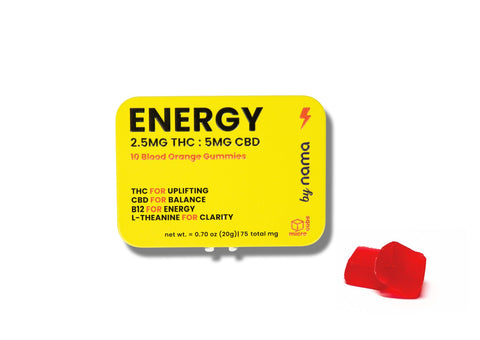
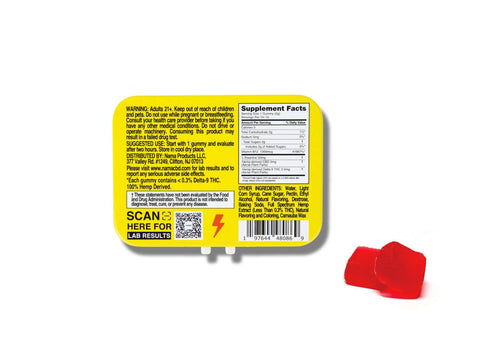


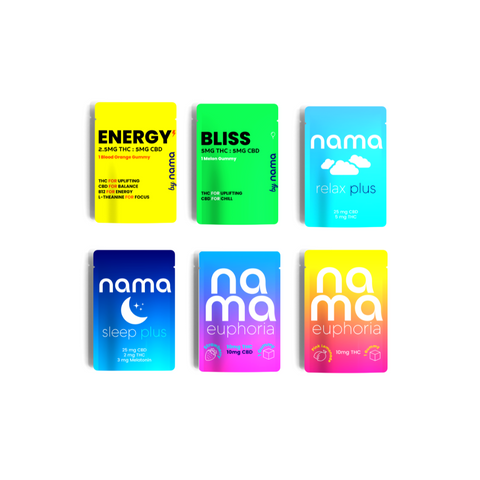
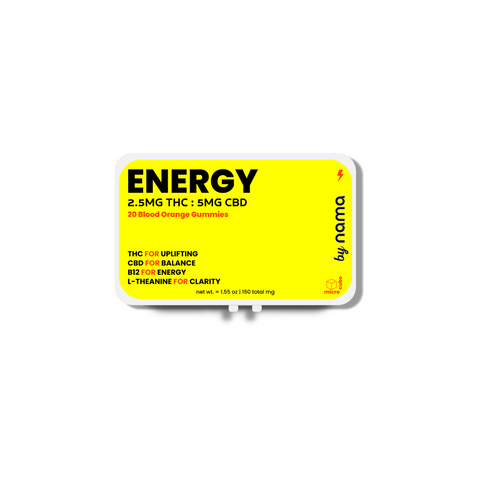

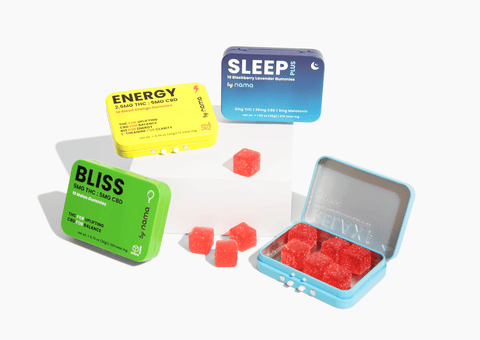
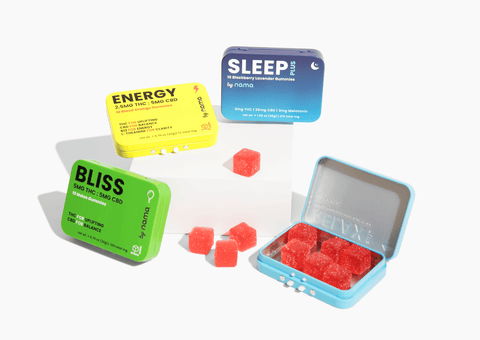
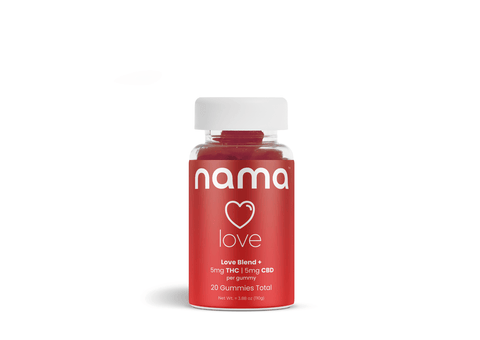






Comments (0)
There are no comments for this article. Be the first one to leave a message!